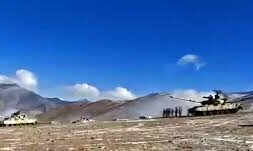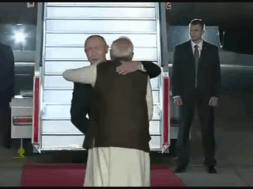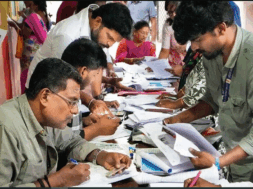
China has Agreed to Step Back from Gogra Point but Disagreed at Hot Springs: Official Sources
NEW DELHI, Aug 3: India and China have agreed in principle to disengage at a key patrol point in Eastern Ladakh even though some other friction areas remain in the region, the government sources said.
The agreement on PP17A was reached during the 12th round of Corps Commander-level talks held on Saturday. The meeting, which was part of a series of measures to resolve the 15-month standoff in Ladakh, was held on the Indian side of the Chushul-Moldo border.
Sources said China has agreed to step back from PP17A, also known as the Gogra Post, but is “not inclined” to move back from PP15 or the Hot Springs area. “Modalities are being worked out. But on PP17A, there is an agreement to disengage. On PP15, China continues to insist that it is holding its own side of the Line of Actual Control (LAC),” official sources said.
The proposals are with the government and details of how the troops will move are being discussed, sources said. The movement is expected to start within the next couple of days, they said.
The issue of Chinese ingression in the Depsang Plains and Charding-Ninglung Nallah (CNN) in the Demchok area were not discussed, sources said. But the latest breakthrough is significant, they said, considering the stalemate since February.
A joint statement issued on Monday said the two sides had a “candid and in-depth exchange of views on resolution of remaining areas related to disengagement along the LAC in the Western Sector of India-China border areas.”
It said: “The two sides noted that this…meeting was constructive, which further enhanced mutual understanding. They agreed to resolve these remaining issues in an expeditious manner in accordance with the existing agreements and protocols and maintain the momentum of dialogue and negotiations.”
The statement said the two also agreed that in the interim, “they will continue their effective efforts in ensuring stability along the LAC in the Western Sector and jointly maintain peace and tranquility”.
According to sources, the disengagement at PP17A is likely to follow the process that was adopted for PP14 in the Galwan Valley and Pangong Tso where a time-frame was set for withdrawal, temporary structures were removed and a physical verification was done.
Platoon-sized units have been present on the Indian side of the LAC, at PP15 and PP17A, since the Galwan clashes of June last year, but the forces are no longer in an “eyeball to eyeball” confrontation.
“There is a distance of about 500m between troops of both countries at these friction points. But disengagement is important because it is difficult to maintain these positions, and matters can go out of hand any time,” sources said.
In February, the two sides had disengaged from the north and south banks of Pangong Tso, where troops and tanks from both sides were barely a few hundred metres apart at some locations.
Apart from PP15 and PP17A, PP14 in Galwan Valley, and Finger 4 on the north bank of Pangong Tso and Rezang La and Rechin La on the south bank, were identified as friction points. Forces from both sides have since disengaged from PP14 after the violent clashes of June 15 last year, which left 20 Indian and at least four Chinese troops dead.
In Depsang Plains, Chinese troops are blocking Indian soldiers from accessing their traditional patrolling limits — PP10, PP11, PP11A, PP12 and PP13. In Demchok, sources said, “so-called civilians” have pitched tents on the Indian side of Charding Nallah, which marks the LAC.0
“Parallel to the talks, China is also engaged in pin-prick tactics. They are building permanent structures very close to the border at many places and have quickened the pace of infrastructure development on their side. But we are hopeful of things improving at existing friction points,” officials said.
(Manas Dasgupta)














